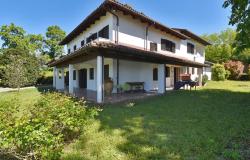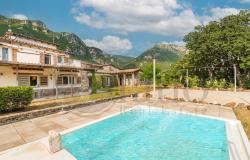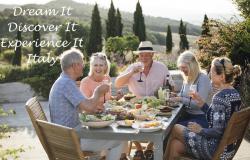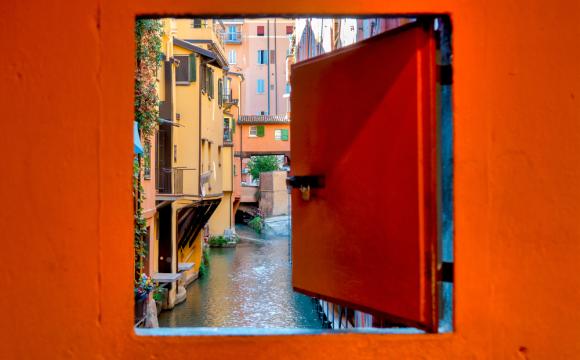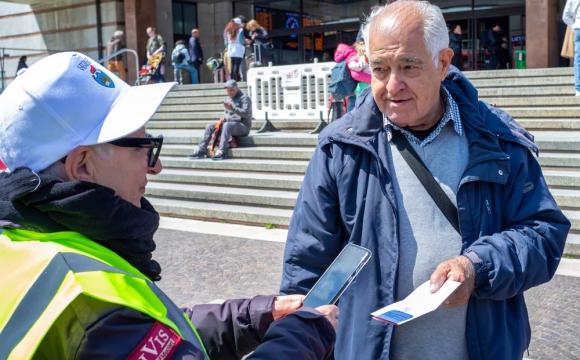Words by Michael H. Sedge and Nicola Lanna
Pictures by Michael H. Sedge and John Heseltine
I rolled into the street-wise seaport of Naples driving a yellow, matchbox-sized Fiat 500. From the south end of via Roma I watched as laundry, draped across lines strung from balcony to balcony, flapped like giant fans in the alleyways to my right. As a breathtaking view of the turquoise sea and the distant outline of Vesuvius appeared before me, traffic suddenly stopped, bumper-to-bumper. A symphony of honking horns bellowed out the city’s traditional music. There I sat in awe, caught between the Beauty and the Beast that is Naples.
I’d come to the city for a 48-month stay... that was 29 years ago. While I have changed much over the years, Napoli has not.
Neopolitan contrasts

Naples, like all major Italian cities, has numerous rules, laws, and methods of doing everything - there is even a regulation stipulating what time of day you are allowed to put out the rubbish. Neapolitans, on the other hand, take great enjoyment in flouting the rules – parking on pavements, driving down one-way streets in the opposite direction, making four lanes out of a two-lane motorway and smoking in public ‘no-smoking’ areas.

Naples is history, beauty, and culture – a city of extremes. The finest voices in the world have echoed in the halls of the San Carlo Opera House (teatrosancarlo.it). The Capodimonte Museum and Gallery contain works by Leonardo, Michelangelo, and Raphael.
The National Museum of Archaeology holds more treasures from the ruins of Pompeii than does the excavated site itself. The city, in fact, is a living museum, telling the stories of centuries of invasion: Greek, Norman, French, Spanish. They all came. They all conquered. They all left their mark on this Mediterranean port. And they all met a Neapolitan population, as did I, that enjoys life, takes its problems with a grain of salt, and lives by the rule that good food, good wine, and good music give life its true meaning.
Artecard an museums
When friends arrived recently, I suggested the first thing they do was purchase an Artecard. Available at the Capodichino Airport, train and metro stations, the seaport, plus many hotels and travel agencies, this card allows free entry into the first two museums of your choice, and a 50% discount on all others.
Naples has some of the world’s greatest museums and, Artecard in hand, my friends began exploring them the next morning.

1. The Royal Palace, located in the vast open area of Piazza Plebiscito, was the perfect starting point.
Designed by Domenico Fontana for Viceroy Ferrante di Castro in 1600, the Royal Palace was restored and enlarged when it became the official residence of the Bourbon and Savoy kings. The eight statues along the façade placed there by Umberto I represent the heads of the various dynasties which have reigned over Naples. Well worth seeing are the royal suites and the court theatre. The Naples public library (Biblioteca Nazionale) and the Kennedy Library, with books and periodicals in English, are also housed here.
Royal Palace of Naples.

2. The Capodimonte Museum and National Gallery is one of the best in Europe, containing a vast collection of paintings, sculptures, majolica, and antique
weapons. Artists such as Bellini, Botticelli, Michelangelo, Caravaggio, Titian and Raphael are all here. The museum is situated in the former hunting grounds of the Bourbon monarchs, with dense forests of oak, pine, and lime trees.
museo-capodimonte.it.

3. The National Museum of Archaeology, in Piazza Museo, combines discoveries from all parts of Europe with emphasis on nearby Pompeii and Herculaneum. Most of these works are of Greek Hellenistic style. There are also statues, art objects, glassware, and presepe figures from later periods. The building that contains the collection dates to the mid-1700s, and was first used as a military barracks, and later as a university. Some of the best examples of mosaic works and ancient scroll writing can be found on the first floor. There is also a fine Egyptology section.
marketplace.it/museo.nazionale.
Mad prince

Because my visitors were keen on mystery, I directed them to one of my personal favorites, which many guidebooks overlook, the Sansevero Chapel. The tales that surround this place tell of the alchemist-some say mad-Prince of San Severo, who murdered his lover and butler after catching them together in flagrante. In the basement are two skeletons said to be those of the victims, still with their original nerve and circulatory systems intact, preserved deliberately, so the story goes, by a post mortem chemical injection.
Other objects of interest include the breathtaking marble statue, ‘Veiled Christ’, by Sammartino. Allegedly, after the sculptor completed this he was murdered by the Prince, so that no one else could ever possess a work of art so beautiful.
museosansevero.it.
Naples underground

Forty metres below the bustling streets of Naples lies over 2000 years of history. On Saturday and Sunday mornings there are guided tours through the many underground passages. During this unique walk, you trace the roots of the city, from the foundation of Neopolis to the bombings of World War II.
Catacombs of San Gaudioso, in Piazza Sanità. The origin of this subterranean network is linked to the veneration of Saint Gaudioso, Bishop of Abitina, in Africa. According to legend, he was set adrift at sea around 450 A.D., eventually landing in Naples.
catacombedinapoli.it
How to get to Naples
Capodichino International Airport connects the city of Naples to the rest of Europe.
Airport information may be obtained by calling 081.789.6259 or email. customer_service@gesac.it. The airport website is www.gesac.it/.
Useful links

News and stories about Naples.
Accommodation in Naples.
Holidays in Naples.
Wedding Services in Naples.
Photos of Naples.
Travel guides to Naples on Amazon UK.
Travel guides to Naples on Amazon US.
If you recommend any other place to visit or where to eat great food that would be just great!
Your comments about your last trip to the town of Naples are really welcomed.









